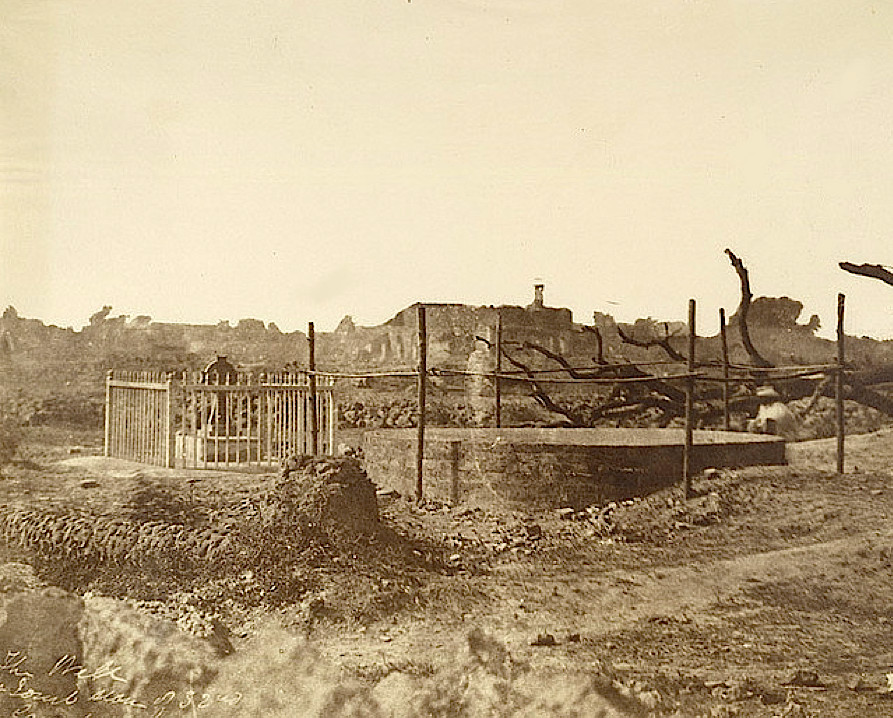
An Old Photograph of Bibighar where Nawab was Hanged.
Dr.Mazhar
Naqvi
Nawab
Azam Ali Khan and his son Amjad Ali Khan are two unsung heroes of India’s first
War of Independence. Nawab was hanged to death on the order of Major Bruce in
November 1858 in Kanpur while his son met a similar fate in Sarai Meera on the
outskirts of Kannauj City. They were found guilty of supplying ‘Rasad’ to the
troops of Nana Rao during what is described by British historians as ‘Sepoy
Mutiny of 1857 ‘.After the recapture of Kanpur, the British had exhibited the most
barbaric and cruel vendetta. Under the command of General Neil, the British
soldiers hunted Nana Saheb and his followers and meted out most inhuman
treatment those who landed into their custody.
The
British were more inhuman and revengeful in Kanpur following the massacre of
their fellow countrymen at Satichaura Ghat on the right bank of the Ganges and
killing of English women and children inside Bibighar in 1857.They hanged
scores of people on slightest suspicion. Before hanging them from an old Banyan
tree near the site of Bibighar massacre, The British tried them summarily and
found them guilty of participating in the massacre without hearing even their
version. On the orders of General Neil, they were made to lick the blood of
slain women and children. The British also used to light pyre under the gallows
before hanging them. They realized fine to the tune of Rs.3 lakhs from locals
to raise a memorial in memory of those killed by native forces in 1857, raided
each house and hanged every one if found possessing any pro-Bahadur Shah or Nana
Saheb literature.
Nawab
and his son somehow managed to evade arrest. While Azam Ali Khan remained in
Kanpur but his son took shelter with Rani Sahiba of Tirwa near Kannauj. She
used to consider Amjad Ali Khan as her brother and even tied Rakhi on Raksha Bandhan
on his wrist. As British were aware of the crucial role played by Nawab Azam in making constant
supplies to Nana Saheb, they continues to track down him vigorously and finally
captured him, tried him like other natives and hanged him also from the same
banyan tree. His dead body was also dumped into a common grave dug out under
the shadow of the tree for disposal of the corpses. The British also did not
spare his son. Upon coming to know about his whereabouts, a contingent was dispatched for Tirwa. Finding her
Rakhi sister in danger, Amjad Ali immediately left Tirwa but captured near Sarai
Meera. He too faced a summary trial and executed. His grave has become a
popular shrine and the locals remember him as Syed or Shaeed Baba. Even after
killing Nawab and his son, the British did not stop. They seized his all
properties and auctioned his palatial palace in Gilis Bazar and two Kothis in Generalganj
and Gwaltoli for just Rs.23000.Traitors purchased his properties and one of
them converted his beautiful Imambara into a temple in Chatai Mohal locality. The
British also harassed women and children of their family. As a result, they went
to Nepal and returned to Kanpur after proclamation of Aam Maafi by Queen Victoria.
The district authorities did not allow them to visit the grave of Nawab Azam or
raise any structure of any memory.
Ironically, the Independence on August 15, 1947
did not bring any cheers to his descendants. Indian bureaucracy also rejected
their demand for installation of a statue in memory of Nawab Azam near banyan
tree. When they mounted pressure, the Indian government asked them to bear half
of the cost. His grandson Nawab Aijaz refused pension in protest but his effort
failed to evoke any response. Kanpur still has
no memorial for the martyred Nawab and lacks even awareness about him. Nawab
Azam Ali was not only a great patriot but also an azadar of eminence. He built
an impressive Imambara and mosque. He hosted grand Majalis during Muharram. He
also built a Karbala in Colonelganj from where a number of processions either
originate or terminate during Ayaam-E-Aza.the Karbala is named after him. It is
being maintained well by local Imamis but no initiative is being taken to mark
the site of his grave with any identification symbol or plaque. Nawab surely deserves
recognition of his bravery and sacrifice in Independent India and Kanpurites in
general and Imamis in particular need to take up his cause. The emotional bond
between Hindu queen of Tirwa and Amjad Ali
Khan should also be highlighted as a model of communal harmony at a time when India
is facing the wrath of sectarians in certain pockets. (This article Has been contributed on the occasion of India’s
independence day today as a tribute to Nawab Azam Ali Khan and his son. References
available on request.)
No comments:
Post a Comment